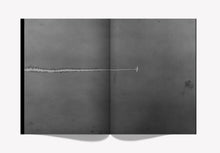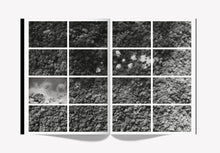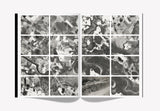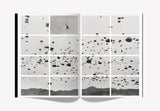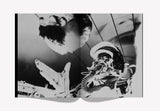OODA LOOPS
PRE ORDER, shipping November
Soft cover,
swiss binding,
240 Images,
44 pages,
23 x 31 cm
2024
Published by AMC Books & Kominek Books
-
Images ©️ Archive of Modern Conflict
Edition ©️ Archive of Modern Conflict & Kominek Text ©️ Ian Jeffrey
Editing by Kalev Erickson
Design by Misha Kominek
Typesetting by Gonzalo Sanchez
Separations by Jan Scheffler
Printed by DZA Germany
*
WHAT LIES AHEAD?
The OODA Loop is known in business and in warfare. It was originally devised by John Boyd, a USAF officer who was active in the Korean war and who later earned the moniker 40-Second Boyd for
his supremacy in simulated air-to-air combat. Boyd revolutionised both aerial combat training tactics and fighter plane design, recognising that quickness, manoeuvrability and superior visibility were a more successful combination than bigger, stronger and more technologically advanced aircraft. US pilots benefited from improved design that allowed for better lines of sight, and as a result were able to process more data more quickly, which could be turned into an advantage against opposition.
Boyd later formulated this insight as the OODA Loop, an acronym for Observe, Orient, Decide and Act. The Loop part of the formula described its character as a feedback system that relayed any new data back to the beginning of the process. Thatistosay,thepilothadtobeina position to make up his own mind on the basis of current evidence. The old order, by contrast, tended to rely on tried and tested formulae which may have functioned once upon a time but had become outmoded.
In this pictorial series, assembled from the collection of the Archive of Modern Conflict, the OODA Loop is tested and demonstrated with reference to imagery from many sources, arranged in 16 sets of up to 16 images apiece, beginning with a set of towering cloudscapes, part of the habitat of pilots. A combat pilot of that era would need to know in which direction he was heading, and in this context clouds were screens and obstacles which could be interpreted from their shadings. The pilot would take advantage of these observations to orientate himself with regard to east and west, to guard against emerging headlong into bright light, for instance. So a cloud might be an obstacle and a screen, but a guide if its tones could be properly and quickly interpreted. It would be important, in any event, to read shadows and highlights on clouds, just as one would need to scan shaded rocks and mountains to get some idea of the height of the sun and the time of day.
Ian Jeffrey

















